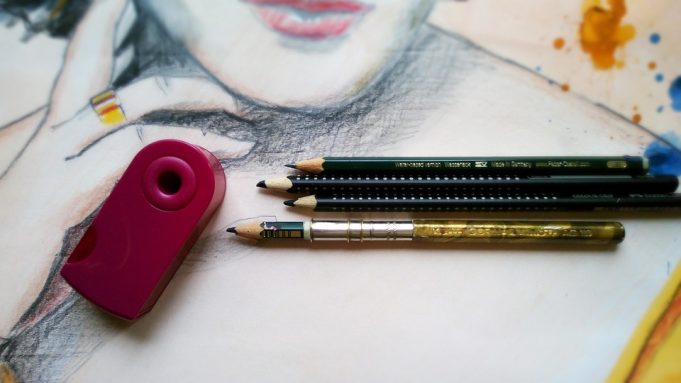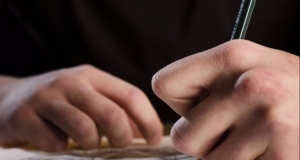Once you learn to draw, soon you recognize: a major part of this art is just craftsmanship and technique. Once you are proficient in the primary techniques, your creativeness can rely on these basics. This gives you further freedom for developing your drawing skills and imagination rather than concentrating on employing the basic techniques properly.
Therefore it’s a good thought to practice these primary drawing techniques regularly. Particularly as you are beginning to learn to draw, a lot of exercising these primary techniques will quicken your drawing success.
Learn Drawing Hatchings and Cross-Hatchings
Hatching implies to draw a lot parallel lines approximately. In difference to conventional shadings the lines are not allowed to touch each other! Though there is still white space between the lines they form an area apparently shaded densely.
Cross-hatching takes it one step further. While you’re exercising cross-hatching you cover one set of hatchings with another set rectangular to the first one. Thus cross hatchings become much denser and solider than (single) hatchings.
Drawing hatchings calls for preciseness. So exercising hatchings is also a great opportunity to train your draftsmanship preciseness. First commence to fill up blank sheets of paper with hatchings and cross-hatchings not having a concrete subject in your eye.
Once you have acquired some technique, you ought to try first simple studies. Choose such sceneries that contain plenty of shadow. Try to reproduce this scene without using outlines. Instead trust completely on translating the darknesses and dark areas into hatchings. Let the hatchings’ direction follow the subjects you’re depicting. For drawing darker areas and darknesses place the lines of your hatching closer to each other or use cross hatching.
Learn to Draw Shadings
To draw shadings is more common than hatching. It’s more instinctual and requires less skills. When drawing shadings you merely fill up areas of your drawing with your pencil. By varying the softness of your pencil, the force you apply and the number of layers of shadings you create you manage the tones you produce.
Similar as when creating hatchings you draw shadings by drawing lots of lines. This time you draw them so dense to each other they overlap and blend completely. Shadings made out of lines still have a direction (though not as strong as in hatchings). So pay attention to align your shadings’ direction with the forms of the objects you are drawing. To make the shading more dense you have to apply the same techniques as when creating cross hatching.
A different way for drawing shadings involves drawing countless very little circles densely together so they merge and blend. Shadings made this way are extremely smooth and lack a visible direction. The advantage: you won’t have to keep an eye on the shading’s visible direction.
Ideally you begin exercising shadings instantly. Choose a few sheets of paper, sketch a few bare forms like rectangles and begin to fill them with shadings. Try to make them as smooth as imaginable and apply all the different techniques explicated before.
Again when you have achieved decent levels of expertise, try to begin using the techniques learned on real-world sceneries.
Use Various viewpoints and perspective types
Besides creating shadings and hatchings the most crucial technique you need to know when commencing to learn drawing, is a sound apprehension of perspective.
There are a few rules that can assist you in constructing perspectively correct drafts. But first it’s necessary you practice your eye to acknowledge common structures.
Choose easy subjects largely containing of unbent lines and not too much arcs. And then draw those scenes by drawing only the silhouette. This way you are able to focus on understanding dimensions and perspective. But don’t stay here, reiterate this practice by drawing the same scenery again and again from different viewpoints.
You’ll see with each repetition you’ll apprehend the subject better and your skills to understand and depict the proportions of any subject will increase greatly.
And What comes Next?
This trio of practices are the most important while studying to draw. There are more common skills and techniques you could and should train. You could learn your drawing expertise by yourself – just go out and draw real subjects. Start with simple ones and step-up the degree of difficultness while you advance. Additionally you can learn drawing employing exercises designed and proved to warrant ideal advancements for your drawing abilities.
About the Author
This is the 4rd part of the 6 part series about drawing and how to learn drawing. Visit the next part to learn how to draw online. Here you can also get a free ebook on learning to draw.




















